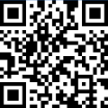

Haoyong Automotive Controls
A rearview Mirror Actuator is a component used in a Auto Side Mirror to adjust their position and angle electronically. It is responsible for controlling the movement of the rearview mirror, allowing the driver to achieve optimal visibility and eliminate blind spots. The actuator typically consists of motors, gears, control circuitry, and electrical connections, enabling precise and remote adjustments of the mirror's orientation.The production process of a Side Mirror Glass Actuator involves several steps. Here is an explanation of the process in English:
1. Design and Engineering: The first step is to design the side Mirror Actuator actuator. This involves creating detailed specifications and considering factors such as size, shape, functionality, and compatibility with the vehicle. Engineering teams use computer-aided design (CAD) software to develop the design.
2. Component Manufacturing: The actuator components are manufactured separately. This may involve processes such as injection molding, precision machining, stamping, or 3D printing. Components may include gears, motors, control circuitry, and wiring.
3. Assembly of Actuator Mechanism: The individual components are assembled to form the actuator mechanism. This involves precision assembly techniques and may require the use of specialized tools and equipment. The gears and motor are connected, and the control circuitry and wiring are integrated into the mechanism.
4. Electrical Integration: The actuator mechanism is connected to the electrical system of the vehicle. This includes wiring the actuator to the vehicle's power supply and integrating it with the control system. Electrical connections are tested to ensure proper functionality.
5. Actuator Testing: The assembled actuator undergoes rigorous testing to ensure its performance and reliability. This includes functional tests to verify its ability to adjust the mirror position accurately, endurance tests to assess its durability under various conditions, and compliance with safety standards.
6. Quality Assurance: The actuator undergoes thorough inspection for quality assurance. Visual inspection, functional testing, and measurements against design specifications are performed to identify any defects or deviations. Any issues are addressed and resolved.


Mr. Hansol Kim